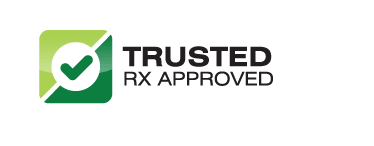Tacrolimus topical
What is this medicine?
Tacrolimus is an immunosuppressant. It works by decreasing your body's immune system. Tacrolimus topical (for the skin) is used to treat severe atopic dermatitis (eczema).
Tacrolimus may also be used for purposes not listed in this medication guide.
What should I tell my health care providers before I take this medicine?
You should not use tacrolimus topical if you are allergic to it.
To make sure you can safely use tacrolimus topical, tell your doctor if you have any of these other conditions:
-
skin cancer or a skin infection (including herpes or chickenpox);
-
any genetic skin disorder (such as Netherton's syndrome);
-
a weak immune system (caused by disease or by using certain medicines);
-
kidney disease; or
-
swelling, redness, or irritation of large areas of your skin.
Tacrolimus can lower the blood cells that help your body fight infections. This can make it easier for you to get sick from a virus such as chicken pox or herpes (cold sores or shingles). Tell your doctor if you have been exposed to any illness.
Some people have developed skin cancer or lymphoma after using tacrolimus or pimecrolimus (Elidel). However, it is not known if either of these medicines causes skin cancer or lymphoma. Talk to your doctor about your individual risk.
FDA pregnancy category C. It is not known whether tacrolimus topical will harm an unborn baby. Tell your doctor if you are pregnant or plan to become pregnant while using this medication.
Tacrolimus topical can pass into breast milk and may harm a nursing baby. Do not use this medication without telling your doctor if you are breast-feeding a baby. Do not use tacrolimus topical on a child younger than 2 years old.
How should I use this medicine?
Use exactly as prescribed by your doctor. Do not use in larger or smaller amounts or for longer than recommended. Follow the directions on your prescription label. If you are using this medicine on a child younger than 16 years old, use only the 0.03% ointment. The 0.1% ointment is for adults and children who are at least 16 years old, but is too strong to use on younger children.
Wash your hands before and after using tacrolimus, unless you are using the medication to treat a hand condition. Apply the medicine in a thin layer, only to skin areas affected by eczema. Do not cover the treated skin with a bandage.
Do not bathe, shower, or swim right after applying tacrolimus topical. Water may wash off the medicine. You may need to use a moisturizing cream or lotion to keep your skin from getting too dry. Ask your doctor about which moisturizer to use.
Tacrolimus is not for long-term use. Stop using the medicine once your symptoms have cleared up, unless your doctor has told you otherwise. Call your doctor if your symptoms do not improve after 6 weeks of treatment, or if they get worse while using tacrolimus. Store at room temperature. Do not freeze. Keep ointment tube tightly closed when not in use.
What if I miss a dose?
Apply the missed dose as soon as you remember. Skip the missed dose if it is almost time for your next scheduled dose. Do not use extra medicine to make up the missed dose.
What may interact with this medicine?
It is not likely that other drugs you take orally or inject will have an effect on topically applied tacrolimus topical. But an interaction may occur if you apply tacrolimus over large skin areas. Tell your doctor about all other medicines you use, especially:
-
conivaptan (Vaprisol);
-
imatinib (Gleevec);
-
isoniazid (for treating tuberculosis);
-
an antibiotic such as clarithromycin (Biaxin), erythromycin (E.E.S., EryPed, Ery-Tab, Erythrocin, Pediazole), or telithromycin (Ketek);
-
an antidepressant such as nefazodone;
-
antifungal medication such as clotrimazole (Mycelex Troche), itraconazole (Sporanox), ketoconazole (Extina, Ketozole, Nizoral, Xolegal), miconazole (Oravig), or voriconazole (Vfend);
-
heart or blood pressure medication such as nicardipine (Cardene) or quinidine (Quin-G);
-
HIV/AIDS medicine such as atazanavir (Reyataz), delavirdine (Rescriptor), fosamprenavir (Lexiva), indinavir (Crixivan), nelfinavir (Viracept), saquinavir (Invirase), or ritonavir (Norvir, Kaletra);
This list is not complete and other drugs may interact with tacrolimus topical. Tell your doctor about all medications you use. This includes prescription, over-the-counter, vitamin, and herbal products. Do not start a new medication without telling your doctor.
What side effects may I notice from this medicine?
Get emergency medical help if you have any of these signs of an allergic reaction: hives; difficult breathing; swelling of your face, lips, tongue, or throat.
Stop using tacrolimus and call your doctor at once if you have a serious side effect such as:
-
severe stinging, burning, itching, or soreness where the medicine is applied;
-
swollen glands;
-
redness or crusting around your hair follicles; or
-
signs of a skin infection (redness, swelling, itching, oozing).
Less serious side effects may include:
-
mild burning, stinging, or itching;
-
skin redness;
-
acne;
-
cold or flu symptoms such as stuffy nose, sneezing, sore throat;
-
headache; or
-
feeling more sensitive to hot or cold temperatures.
This is not a complete list of side effects and others may occur.
What should I watch for while using this medicine?
Avoid using other medications on the areas you treat with tacrolimus topical unless your doctor tells you to.
Avoid exposure to sunlight or tanning beds, and phototherapy treatments with UVA or UVB light. If you must be outdoors, wear loose clothing over the skin areas treated with tacrolimus topical. Do not use sunscreen on treated skin unless your doctor has told you to.
Drinking alcohol while you are using tacrolimus topical may cause your skin or face to feel hot and become flushed or red.
Where should I keep this medicine?
Store at room temperature. Do not freeze. Keep ointment tube tightly closed when not in use





